Contents
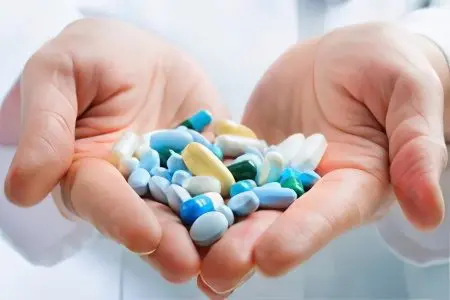
Sinusitis is an inflammation of the paranasal sinuses, which can be caused by a number of reasons. Therefore, when characteristic symptoms appear (a runny nose with thick mucus that does not go away for a long time, headache, a feeling of fullness in the infraorbital region), it is necessary to visit a doctor, undergo a diagnosis and receive qualified recommendations. Ignoring the problem, symptomatic measures and self-treatment can result in the transition of sinusitis to a chronic form.
In the vast majority of cases, this disease is of a bacterial nature, therefore, antibiotics for sinusitis are first-line drugs. However, systemic antimicrobial therapy is prescribed only in cases where the patient’s body cannot fight the infection on its own for a long time and there is a risk of severe complications. Bacteria from the maxillary sinuses can enter the lower respiratory tract through the bloodstream and cause bronchitis or even pneumonia. But the main danger is the proximity of the focus of inflammation to the brain and the possibility of developing meningitis or encephalitis.
The content of the article:
When do you need antibiotics for sinusitis?
What antibiotics are most effective for sinusitis
Protected aminopenicillins;
macrolides;
Cephalosporins;
Fluoroquinolones
Pros and cons of antibiotics for sinusitis
When do you need antibiotics for sinusitis?

To understand in which cases the use of antibiotics for sinusitis is really necessary, you need to consider the causes of the development of this disease.
According to the etiology, sinusitis is divided into the following categories (in descending order of occurrence):
Bacterial – caused by pneumonia, pyogenic or viridescent streptococcus, Staphylococcus aureus, Haemophilus influenzae, Pseudomonas aeruginosa or Escherichia coli, Moraxella, Klebsiella, Chlamydia, Mycoplasma, Proteus and other pathogenic and conditionally pathogenic microorganisms. It occurs as a result of the pathogen entering the maxillary sinuses from the upper respiratory tract (rhinitis, tonsillitis, pharyngitis), the dental system (caries, flux, root granuloma, periodontitis) or the general blood flow in inflammatory diseases (scarlet fever, measles). It happens both unilateral and bilateral, more often purulent than catarrhal (only edema);
Viral – caused by rhinoviruses, coronaviruses, adenoviruses, enteroviruses, influenza A and B, parainfluenza. It usually occurs against the background of a seasonal cold, it is always bilateral, most often catarrhal, sometimes asymptomatic and goes away on its own in 1-2 weeks. With viral sinusitis, antibiotics are useless, or rather, harmful. But on the 7th-10th day, severe influenza, SARS or acute respiratory infections can be complicated by a bacterial infection with accumulation of pus in the maxillary sinuses, then antimicrobial therapy is indicated;
Mixed – caused by a complex of reasons, among which there may be viruses, bacteria, fungi and allergens. Often goes from acute to chronic. It is almost always bilateral and is combined with other forms of sinusitis (frontal sinusitis, ethmoiditis and sphenoiditis). It can have any character: purulent, catarrhal, serous, exudative. With mixed viral-bacterial sinusitis, antibiotics are used, however, the selection of the drug must be carried out very carefully based on the results of the tests and the data of the medical history;
Allergic – is caused by a negative reaction of the body to allergens, among which inhaled particles predominate (household dust, poplar fluff, plant pollen). It is always bilateral, characterized by severe swelling of the mucous membranes, sneezing and rhinorrhea. Antibiotics for sinusitis of an allergic nature are not needed, antihistamines are prescribed and measures are taken to eliminate the allergen from the patient’s daily routine;
Fungal – caused by yeast-like microorganisms and fungi against the background of immunodeficiency states in debilitated patients, the elderly, young children. It is very rare, it is bilateral, it is characterized by a persistent, chronic course, it requires an integrated approach to treatment. With fungal sinusitis, antibiotics are categorically contraindicated;
Medicamentous – is caused by prolonged use of drugs that have a detrimental effect on the mucous membranes of the maxillary sinuses and disrupt the normal functioning of the ciliated epithelium, which is responsible for the evacuation of mucus. It usually occurs against the background of the abuse of vasoconstrictor drops in the nose. It is almost always bilateral, it can be atrophic (tissue necrosis), hyperplastic (mucosal proliferation) or cystic-polyposis (the appearance of polyps that overlap the mouth of the maxillary sinuses) in nature. Without the addition of a bacterial infection, such sinusitis is not treated with antibiotics;
Traumatic – is caused by mechanical damage to the maxillary sinuses, the accumulation of blood and exudate in them and subsequent inflammation. In this case, the patient is shown antibiotics, physiotherapy, and sometimes surgical treatment.
What antibiotics are effective for sinusitis?
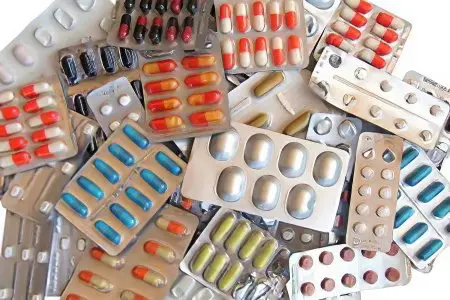
In order to choose the optimal antibacterial drug for the treatment of sinusitis, the doctor takes into account the following patient data:
medical history – when and under what circumstances the disease occurred (seasonal cold, systemic infection, hay fever, trauma), what is the nature of the symptoms (body temperature, the degree of intoxication of the body, the severity of the pain syndrome, the color and consistency of nasal mucus), how long ago the person fell ill, did he try anything – self-treatment;
The results of the examination and analyzes – X-ray, complete blood count, bacterial culture;
Age and status – many antibiotics for sinusitis are not used in children, debilitated and elderly people, pregnant and lactating women;
Information about previously used antibiotics – the more often a person is treated with the same antibacterial drug, the less effective it becomes;
The presence of allergies.
Based on this, it can be understood that the most effective antibiotic for sinusitis will be the drug to which the pathogen is sensitive, there is no resistance, allergies and contraindications, side effects and harm to the body are minimal. Since most modern antibiotics have a very broad spectrum of action and are active against almost all microbes that cause sinusitis, the need for bacterial culture and the establishment of a specific culprit of the disease arises only when the course of therapy has not yielded results.
The most commonly used and effective antibiotics for sinusitis fall into four groups:
Protected aminopenicillin
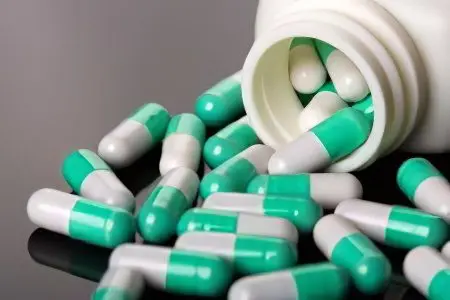
These are synthetic penicillins in combination with special substances that neutralize bacterial resistance. Over the years of active use of penicillins and cephalosporins, many pathogens have adapted to them and developed an enzyme from the beta-lactamase group called “penicillinase”, which simply destroys the drug that enters the body and prevents it from fighting the infection. To avoid this, sulbactam or clavulanic acid is added to penicillins.
Most effective against sinusitis:
Sulbactamate ampicillin (Ampicid, Libaccil, Unazin, Sultasin, Sulbacin, Sulacillin, Sultamicillin);
Amoxicillin clavulanates (Amoxiclav, Ekoklav, Rapiclav, Flemoklav, Panklav, Augmentin).
Protected penicillins have a bactericidal effect (destroy bacteria), moreover, they do it targetedly, since they are guided by special markers of the cell membranes of pathogens. There are no similar cells in the human body, so this therapy does not destroy healthy tissues. Penicillins are widely used to treat sinusitis in children. However, allergies to drugs of this group quite often occur, and long-term use is fraught with an imbalance in the microflora of internal organs, side effects from the gastrointestinal tract, and the development of fungal infections. Another minus of penicillins is a short half-life, which is why the pills have to be taken every 4-6 hours.
Macrolides
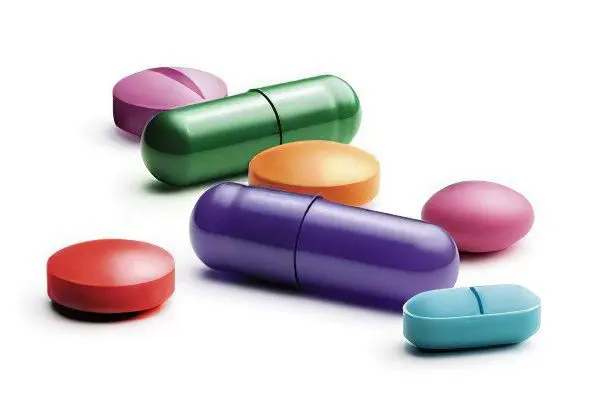
Antibiotics of this group are the safest for humans, they are the least likely to cause allergies and side effects. Unlike penicillins, they have a bacteriostatic effect (prevent bacteria from multiplying), which is very beneficial for persistent, chronic sinusitis. In addition, macrolides are effective against obligate intracellular parasites (mycoplasmas, chlamydia), which recently also often cause sinusitis.
These drugs are very convenient to use, because they accumulate well in tissues and remain in them for a long time. Macrolides of the latest generations are sold in packages containing only a few capsules. Uncomplicated infections are successfully treated even with a single dose. If the patient has an individual intolerance to penicillins, an atypical or mixed form of the disease, macrolides will be the most effective antibiotics for sinusitis.
The disadvantages include the high cost of some drugs in this group. Use in childhood, during pregnancy and lactation is possible when the potential risk is lower than the expected benefit.
Macrolides are divided into:
14-membered – Erythromycin, Roxithromycin (Rulid, Xitrocin, Elrox, Roxilor, Rovenal), Clarithromycin (Klacid, Klabaks, Claricin, Ecocitrin, Fromilid Uno);
15-membered Azithromycin and its analogues, called azalides (Hemomycin, Sumamed, Azitral, Azitrox, Azitrus, Zitrolid, Zi-factor);
16-membered – Midekamycin (Macropen, Midepin), Spiramycin (Rovamycin, Spiramisar), Josamycin (Vilprafen).
Cephalosporins

This is one of the most numerous and long-used groups of antibiotics. They have a bactericidal effect. To date, there are already five generations of cephalosporins. In terms of the breadth of the antibacterial spectrum, they do not exceed penicillins and, moreover, macrolides, however, they are resistant to beta-lactamases – enzymes that explain the resistance of some pathogens of sinusitis. However, this statement is true for far from all cephalosporins.
If a patient is allergic to penicillins, then with a high probability he will have a negative reaction to cephalosporins. Side effects are also similar, treatment of sinusitis in children is possible, during pregnancy and lactation, the issue is resolved individually. Many drugs in this group are unsuitable for oral administration, because they are not absorbed from the gastrointestinal tract, and even strongly irritate the mucous membranes. The advantages of cephalosporins as antibiotics for sinusitis include an affordable price.
Cephalosporins are divided into:
1st generation – Cefazolin (Lizolin, Kefzol, Zolfin), Cephalexin (Ecocefron, Sporidex, Lexin);
2nd generation – Cefuroxime (Zinacef, Cefurus, Aksetin), Cefoxitin (Anaerocef, Boncefin, Mefoxin);
3rd generation – Cefixime (Suprax, Maxibat, Loprax), Ceftriaxone (Rotefin, Azaran, Lendacin);
4th generation – Cefpir (Isodepem, Cefanorm), Cefepim (Cefomax, Maximim);
5th generation – Ceftobiprole (Zaftera), Ceftolozane.
Fluoroquinolones
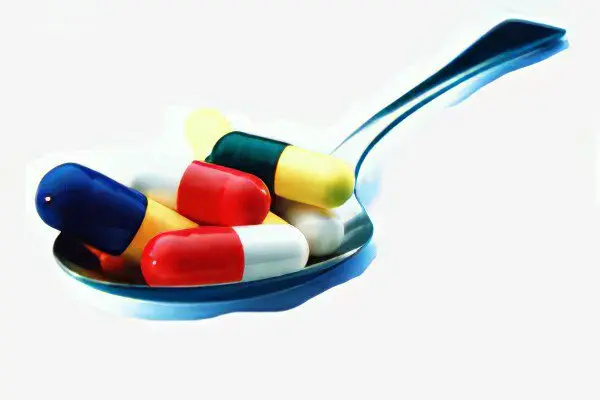
The drugs of this group are very different from other antibiotics from sinusitis, because they are completely synthetic and do not occur in wildlife. Fluoroquinolones have a wide range of antibacterial effects, have a very rapid and pronounced bactericidal effect on most pathogens of sinusitis, including its atypical forms caused by chlamydia or mycoplasmas. However, due to their high toxicity and alien, artificial origin, they often lead to the development of allergies and the occurrence of severe side effects from the gastrointestinal tract and nervous system.
As antibiotics for sinusitis in children, fluoroquinolones are considered only in extreme cases; they are categorically contraindicated for pregnant and lactating women. Another disadvantage of the drugs in this group is the high price, but if you look for a medicine by the active substance, and not by a well-known brand, you can save a lot.
Fluoroquinolones are divided into:
1st generation – Ofloxacin (Tarivid, Zanotsin), Pefloxacin (Abaktal, Unikpev);
2nd generation – Ciprofloxacin (Ciprolet, Tsifran, Tsifrinol, Ciprobay, Ecocifol), Norfloxacin (Nolicin, Normax, Norbactin);
3rd generation – Levofloxacin (Glevo, Tavanik, Levostar), Sparfloxacin (Sparflo, Respara, Sparbact);
4th generation – Moxifloxacin (Moxin, Avelox, Megaflox), Gemifloxacin (Factiv).
Pros and cons of antibiotics for sinusitis
The best antibiotic for sinusitis can be selected by analyzing a swab from the nose. 48 hours after taking the prescribed antibiotic, there must be a positive reaction, otherwise an urgent replacement will be required. Perhaps the pathogen has managed to develop resistance to this antibiotic, or the nature of sinusitis is not bacterial – it is viral, fungal, allergic or mixed.
Ceftriaxone for sinusitis
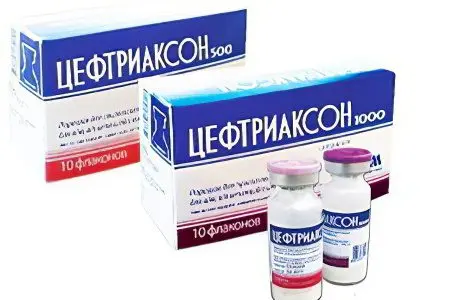
Along with many other cephalosporin-type antibiotics, ceftriaxone is considered an effective drug for the treatment of sinusitis. It belongs to the third generation and has a powerful bactericidal effect against the vast majority of microbes that cause sinusitis. Ceftriaxone is very often prescribed for inflammatory diseases of the nasopharynx, throat, bronchi and lungs. Its effectiveness is so high that it is even used to treat sepsis, peritonitis and meningitis.
Pros
The main advantage of Ceftriaxone is the high effectiveness of the treatment of bacterial infections, the development of which needs to be urgently stopped. Since this antibiotic has a strong and rapid bactericidal effect, it is very well suited for the treatment of acute sinusitis, accompanied by severe pain, fever, a large accumulation of pus in the sinuses and severe intoxication of the body. In such a situation, it is bactericidal and non-bacteriostatic antimicrobials for sinusitis that are most effective and help you get back on your feet faster.
The second undoubted plus of Ceftriaxone is that it is a modern drug resistant to beta-lactamase, which means that the likelihood that the causative agent of sinusitis will be resistant to it is close to zero. The third advantage of Ceftriaxone is its affordable price: you can buy a package of powder in ampoules for the preparation of an injection solution of domestic production for 25-50 rubles. Foreign analogues (Rocefin, Azaran, Lendatsin) cost from 500 to 2500 rubles.
Cons
The main disadvantage of Ceftriaxone is associated with a high risk of side effects. Treatment of sinusitis with this drug is sometimes accompanied by gastrointestinal disorders, hepatitis, Quincke’s edema, jaundice and interstitial nephritis. Therefore, antibiotics from the cephalosporin group are not the first choice in the case of sinusitis. Ceftriaxone is prescribed to pregnant women only if other therapies have failed and there is a threat to life. During breastfeeding, the drug is contraindicated. For the treatment of sinusitis in young children, the dosage is selected individually.
The second obvious minus of Ceftriaxone is the impossibility of oral administration, since this antibiotic, like many other cephalosporin drugs, is practically not absorbed from the gastrointestinal tract and has a strong irritating effect on the mucous membranes. Ceftriaxone is administered intravenously or intramuscularly 1-2 times a day and in no case is mixed with calcium solutions. As we mentioned above, cephalosporins are also completely incompatible with ethanol.
The third disadvantage of Ceftriaxone as an antibiotic for sinusitis is the numerous undesirable interactions with other drugs. When combined with drugs that reduce platelet aggregation (for example, with conventional Aspirin), there is a risk of developing internal bleeding. And when taken simultaneously with loop diuretics, the nephrotoxic effect of Ceftriaxone is aggravated. Mixing this drug with antibiotics of other groups to enhance the effect is unacceptable.
Augmentin (amoxiclav) from sinusitis
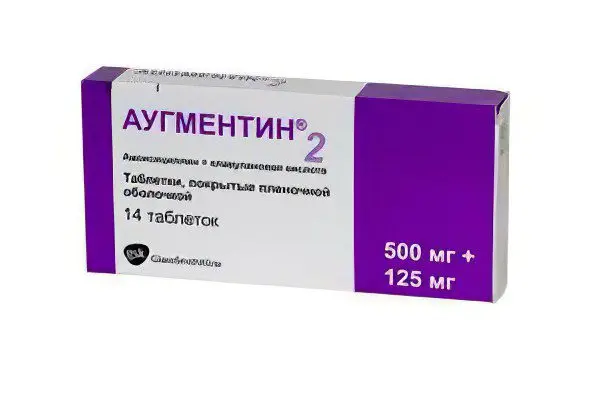
The drug Augmentin (aka amoxiclav) is a broad-spectrum antibiotic that has a powerful bactericidal effect on most pathogens of sinusitis. It belongs to the category of protected semi-synthetic aminopenicillins, which contain clavulanic acid, a special substance that destroys beta-lactamase enzymes, with which bacteria try to destroy antibiotics from sinusitis, although it should be the other way around. A popular analogue of Augmentin is the drug Amoxiclav: they have an absolutely identical composition, but a slightly different price – the second option is cheaper.
Pros
Augmentin is a modern antibacterial drug developed by the specialists of the British pharmaceutical company SmithKline Beecham Pharmaceuticals, which has a very high reputation in the market, is famous for the high quality and safety of its products. It is the protected semi-synthetic aminopenicillins, such as Augmentin and Amoxiclav, that are today considered the most effective antibiotics for sinusitis, since they are not afraid of the acquired resistance of pathogens.
The second undoubted plus of Augmentin is that this antibiotic has a selective bactericidal effect, recognizing pathogenic microbes by special markers on their cell membranes. And since there are no similar cells in the human body, during the treatment of sinusitis with Augmentin, healthy tissues will not be damaged. That is why protected semi-synthetic aminopenicillins of the latest generation are most often used in the treatment of ENT diseases in children.
The third indisputable advantage of Augmentin is its ease of use – to maintain the therapeutic effect, it is enough to take the drug 2 times a day. In some special cases, a single daily dose is indicated or the dosage is divided into 3-4 doses.
Cons
All the disadvantages of Augmentin, like other penicillin antibiotics used to treat sinusitis, are centered around side effects. Patients often experience nausea and heartburn. Cases of damage to the liver and kidneys are known. Sometimes local allergic reactions, candidiasis, and intestinal dysbacteriosis develop. Among the disadvantages of Augmentin, it is difficult not to attribute its high cost.
Sumamed from sinusitis
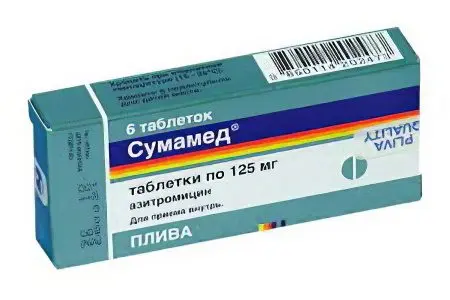
Sumamed belongs to the second generation of macrolides, consisting of 15-membered azalides – Azithromycin and its analogues. However, it is Sumamed that is the most popular drug in this group, since it is produced by reputable pharmaceutical companies (Teva – Israel and PLIVA HRVATSKA – Croatia), is of high quality and has been successfully used to treat complex bacterial infections, including sinusitis, for many years.
Pros
The main advantage of Sumamed is the widest possible antibacterial spectrum. This antibiotic is effective even with atypical sinusitis caused by obligate microorganisms – mycoplasma and chlamydia. If we are talking about a mixed, multifactorial infection with a chronic course, it is Sumamed with its bacteriostatic effect that can stop sinusitis and prevent remission. This drug deprives the bacteria of the opportunity to multiply, which means that no matter how many of them are in the body at the time of the start of therapy, the disease will inevitably stop, because the existing pathogens will gradually destroy the cells of the immune system, and new colonies will not be able to appear.
The second huge plus of Sumamed is a record short course of treatment of sinusitis (5-7 days) and ease of administration (1 capsule per day). This drug accumulates very well in the tissues and remains there for a long time, so there is no need to take pills every 4-6 hours, as is the case with many other popular antibiotics for sinusitis.
The third advantage of Sumamed is the relatively low risk of side effects. Only about 10% of patients undergoing treatment of sinusitis with this drug report malfunctions in the gastrointestinal tract (nausea, vomiting, heartburn, dry mouth, epigastric discomfort, flatulence, diarrhea) or troubles from the nervous system (headache, fatigue , insomnia). Allergic reactions and serious pathologies of internal organs develop during Sumamed therapy extremely rarely.
Cons
The main disadvantage of Sumamed from sinusitis is the restrictions on the age, status and health of the patient. This antibiotic is contraindicated in pregnant and lactating women, children under 12 years of age (we are talking about oral capsules, powder is available for babies), as well as people with severe renal and hepatic insufficiency and a number of other serious diseases.
The disadvantages of such an effective antibiotic for sinusitis as Sumamed can only be attributed to a high price, but this problem can be easily solved by selecting an affordable analogue. If the original Sumamed costs 400-500 rubles, then domestic Azithromycin will cost you from 80 to 120 rubles, and it will cure chronic sinusitis just as effectively.
Macropen from sinusitis

Macropen belongs to the last, third generation of macrolides. The active substance of this drug is called midecamycin. Compared with its predecessor, azithromycin, this antibiotic is even less toxic to the human body and has an even more pronounced bacteriostatic effect against the vast majority of pathogens of sinusitis, including atypical, chronic and mixed forms of the disease.
Pros
Continuing to compare Macropen and Sumamed in terms of their effectiveness in the treatment of sinusitis, we note a higher absorption rate and the onset of a therapeutic effect in Macropen – an hour after taking the drug, the required concentration of the substance is established in the patient’s blood. However, the half-life of midecamycin is shorter than that of azithromycin, therefore, a more modern antibiotic will have to be taken more often – 3 capsule of 1 mg 400 times a day (for adults and children weighing more than 30 kg).
The second most important advantage of Macropen, not only over other macrolides, but also over any antibiotics for sinusitis, is the minimal risk of unwanted side effects. In very rare cases, patients complain of nausea, diarrhea, hives or headache. The incidence of complications even with prolonged use of Macropen does not exceed 4%.
Cons
The disadvantages of Macropen include restrictions on the status and state of health of patients: it is not prescribed to people with severe forms of renal and hepatic insufficiency and with a number of other serious pathologies. However, absolutely all antibiotics for sinusitis have the same contraindications for use, so the question of the appropriateness of therapy should be decided individually. The same applies to the treatment of sinusitis in pregnant women – the risk must be justified.
The second minus of Macropen is a rather high cost (250-400 rubles), moreover, it is unlikely that it will be possible to choose a more affordable analogue. Midecamycin is one of the most modern antibiotics, so the pharmacological industry has not yet managed to release many drugs based on it, as in the case of its predecessor, azithromycin.
Flemoxin Solutab from sinusitis

Flemoxin Solutab is the most popular brand today, under which the well-known antibiotic of the penicillin series amoxicillin in the form of trihydrate has been produced for a long time. It is active against bacteria that most often cause acute sinusitis (pneumonic streptococcus, Staphylococcus aureus, Pseudomonas aeruginosa, Moraxella, Klebsiella, etc.) and has a rapid and pronounced bactericidal effect on them.
Pros
The main advantage of Flemoxin lies in its selectivity – only the cells of the pathogens are destroyed, and the tissues of the human body do not suffer from the toxic effect of the drug. For this reason, amoxicillin is the first line antibiotic in the treatment of sinusitis, including in young children.
The popularity of the Flemoxin Solutab tablets themselves, compared with other brands of amoxicillin, is explained by two reasons: firstly, the trihydrate is absorbed faster and easier by the gastrointestinal tract, without causing irritation of the mucous membranes. And secondly, Flemoxin Solutab is a convenient, easily broken into two halves chewable tablets with a pleasant tangerine-lemon taste.
Cons
We already talked about the contraindications and side effects of amoxicillin when we considered Augmentin and Amoxiclav – in this respect, the drugs are identical. However, it is in their differences that the main minus of Flemoxin lies. The fact is that it is an unprotected antibiotic and is destroyed by penicillinase, an enzyme with which many bacteria successfully “defend themselves” from antimicrobial therapy. Resistance of causative agents of acute sinusitis to the drug Flemoxin Solutab has become common in recent years, especially in pediatric practice.
But even if sinusitis is successfully treated with unprotected amoxicillin, you will have to take tablets 3-4 times a day for 7-14 days due to the short half-life of the active substance from the body. Given the high cost of the drug Flemoxin Solutab (up to 600 rubles, depending on the dosage), a full course of therapy will cost a tidy sum.
Isofra with sinusitis

Isofra is a topical antibacterial drug for sinusitis in the form of a nasal spray. The active component of Isofra is the antibiotic framycetin, which belongs to the group of aminoglycosides and has a bactericidal effect on some pathogens of sinusitis (staphylococcus, Escherichia and Pseudomonas aeruginosa, Klebsiella, Enterobacterium, Proteus). Framycetin is not used orally, since it is very toxic to the human body, however, irrigation of the nasopharynx with Isofra spray is accompanied by scanty absorption of the drug into the blood, so this treatment of sinusitis is effective and safe.
Pros
The main advantage of Isofra nasal spray over other antibiotics for sinusitis is the almost complete absence of contraindications for use and side effects, because the active substance does not penetrate the gastrointestinal tract (and therefore cannot cause nausea or diarrhea, or linger in the body due to kidney or liver dysfunction ) and does not accumulate in the blood (and therefore cannot cause allergies or problems from the nervous system).
The undoubted advantages of Isofra from sinusitis include ease of use: one light press allows you to get the exact dose of the drug (for adults 4-6 times a day, one injection in each nostril, and for children – 3 times). Isofra has a subtle lemon aroma, so the treatment of sinusitis and runny nose does not cause dissatisfaction in the smallest patients. The drug is produced in France by the pharmaceutical company Laboratoires BOUCHARA-RECORDATI, which is also known for its effective antiviral drug Polydex.
Cons
A significant minus of Isofra is the narrowness of the antibacterial spectrum. The fact is that framycetin does not have a bactericidal effect on streptococcus pneumoniae, and this is one of the most commonly diagnosed pathogens of acute sinusitis. Resistant to it and anaerobic microorganisms (Peptostreptococci, bacterioids, fusobacteria), which also sometimes cause sinusitis, especially its chronic and constantly recurring forms. Therefore, it is advisable to conduct a short 7-10-day course of treatment of sinusitis with Isofra, and if it does not give a result, move on to another drug.
The disadvantages of the Isofra spray include a rather high price (250-400 rubles), but this is the only effective local antibiotic for sinusitis, so it is worth the money. The only contraindication to its use is damage to the partitions and the period after the puncture of the maxillary sinuses, since in this case the active substance will penetrate into the blood in an unacceptably large volume.
Dioxidine for sinusitis
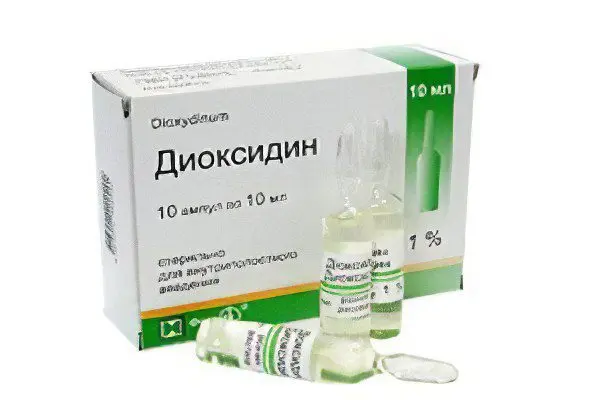
Dioxidine (hydroxymethylquinoxaline dioxide) is a very broad-spectrum bactericidal antibiotic, a derivative of quinoxaline. It is active against all strains of streptococcus and staphylococcus, Pseudomonas aeruginosa and Escherichia coli, shigella, salmonella, and pathogenic anaerobes. Causative agents of sinusitis that are resistant to other antibiotics usually do not withstand the onslaught of dioxidine, so the drug has long been successfully used to treat rhinitis and sinusitis. The optimal form is a 0,5% solution in ampoules, which should be instilled into the nose.
Pros
The main advantage of Dioxidin, as a local antiseptic for sinusitis, is the breadth of the antibacterial spectrum and rapid sanitation of the nasopharynx. By instilling 5 drops of the solution into each previously cleaned nostril 4-6 times a day, in a week you can count on a radical improvement in well-being in the acute form of the disease.
The second plus of this drug is its relatively affordable price – one ampoule will cost you about 50 rubles. However, keep in mind that after opening it can not be stored in the refrigerator for more than one day. Therefore, for a full course of treatment of sinusitis with this antiseptic, most likely, the entire package of 10 ampoules will go.
Cons
Dioxidine is extremely toxic, moreover, it is absorbed into the blood through the mucous membranes when the solution is administered intranasally in volumes sufficient for the development of side effects. Therefore, the official instructions for the drug states that it is contraindicated in pregnant and lactating women, as well as children under 18 years of age. But, despite this, many practicing ENT doctors prescribe this antibiotic for the treatment of sinusitis, even for babies 3-4 years old. How to accept such recommendations is the personal choice of parents.
The second disadvantage of Dioxidin is that by itself it does not cure sinusitis completely, therefore it is always prescribed as part of complex antibacterial therapy. That is, you will not only have to bury a potentially dangerous (and, by the way, terribly bitter) liquid in your nose, but also take antibiotics orally or by injection. It is obvious that such an approach to the treatment of sinusitis is justified only in the case of a severe, complicated course of the disease and a real threat to health.









